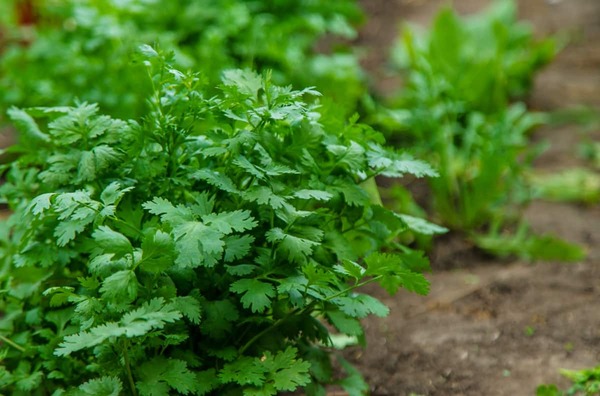People often wonder if coriander is a herb or shrub. Well, Coriander is a fast-growing annual herb that grows best in spring and falls’ cold weather. It’s always in demand, regardless of the timing. Coriander is becoming famous both locally and internationally in terms of market and returns. This herb is cultivated mainly for its fruits as well as for its tender green leaves. Its fruits have a fragrant odor and pleasant aromatic taste.
According to reports, the demand for coriander and other similar spices has increased by more than 40%. Growers are now earning more money by up to 25% compared to traditional crops.
Here is the detailed coriander farming guide. Whether in small spaces or on a farm, this guide will help you grow coriander plants easily.
Coriander Varieties in India:
Coriander is mainly cultivated for leaf purposes. To obtain a high-quality yield, it has to be grown in a specific season. Furthermore, farmers should also select a good-quality coriander variety.
Below, you can check the coriander varieties that are available in India.
| Available Coriander Types |
| CO1 |
GC2 |
| CO2 |
Punjab Sugandh |
| GC1 |
Local |
Major Coriander Cultivator States in India:
As we already know, India is one of the top coriander-producing countries in the world. Let’s look at the top-producing states of this annual herb in the country.
Uses of Coriander:
Coriander is used for various purposes. It has many culinary uses and health benefits. If you wish to know its benefits, you can check the list below.
- Can lower blood sugar
- Have immunity-boosting properties
- Good for heart health
- Supports cognitive function
- Enhances digestive health
- Promotes skin health
- Have antimicrobial properties
Coriander Farming Steps:
Coriander Farming involves a series of processes. These processes are climatic conditions, soil requirements and preparation, plantation, irrigation, pest-disease control and harvesting, etc. Let’s discuss these steps in detail below.
Climate Requirements:
- Coriander grows best in cool weather.
- Growers plant coriander during the rabi season, which falls between October and March in India.
- Coriander requires suitable temperatures between 20°C and 30°C for its growth. When grown from seed, coriander requires about 100-120 days to mature. The best weather conditions for flowering are mild and dry weather.
Soil Preparation:
- Coriander grows in well-drained, loamy soil.
- Before planting, farmers should plough the field to make the soil fine and loose. For effective soil preparation, they can use any Mahindra Tractor.
- They should also add compost or manure to enrich the soil with nutrients.
Plantation:
Plantation is usually done in October or November. Growers plant coriander seeds either by scattering them across the field or in rows. Sometimes, the seeds are treated with a fungicide to protect them from diseases.
Irrigation Methods:
It needs frequent watering, especially during the early growth stages. Farmers should water the plants carefully to keep the soil moist, but not too much. Too much water may cause the roots to rot. However, irrigation depends on climate, soil moisture level, and the growth stages of coriander.
Pest and Disease Control:
Some pests and diseases that affect coriander are aphids and powdery mildew. Farmers use a mix of methods to control these problems. They might use natural predators, chemical sprays, or organic solutions to keep the plants healthy.
Harvest Time:
The timing of the harvest depends on the coriander growth. For fresh leaves, farmers harvest the plants when they are green and tender. For seeds, they wait until the plants dry out in the field. Harvesting is usually done between February and April.
Post-Harvesting:
After harvesting, growers dry, clean, and store the coriander seeds under cool, dry conditions to maintain their quality and shelf life. Proper packaging is also important to protect the seeds from moisture and pests during storage and transportation.
Once the fruits are fully dried and cleaned, farmers sell them in the market. To send these seeds to warehouses or markets, they can use any John Deere Tractor. John Deere tractors are versatile, dynamic, and efficient, making work easy and quick. The HP of these tractors ranges from 28 hp to 120 hp.
Conclusion:
Coriander farming in India is simple and rewarding. It needs cool weather and well-prepared soil. Farmers plant seeds in October or November and water them regularly. Plants tend to flower prematurely in hot and dry weather. So, if you’re cultivating coriander for its leaves, water plants daily in summer to delay flowering.
With good care, coriander plants produce a high yield. This makes coriander farming a good choice for farmers and provides fresh herbs and spices for everyone.



